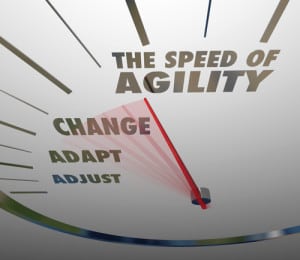
Real-time agility in an enterprise is more than a collection of technology, it is a well-managed organization that brings out the best in people.
Real-time agility in an enterprise is more than a collection of technology, it is a well-managed organization that brings out the best in people. In their latest book, The Sentient Enterprise, Oliver Ratzesberger and Mohan Sawhney – both seasoned veterans in the data analytics and technology space – provide a vivid description of the emerging enterprise that is capable of sensing and responding, in real time, to any and all events of material importance.
See also: Blockchain vs. Bitcoin — will 2018 be the year where we get the difference?
Technology is the essential tool, of course – in my previous post, I outlined the five essential platforms that help make it all work. However, Ratzesberger and Sawhney state that none of this will work without that essential human element – the leadership, vision, and passion required to pull people, processes, and technology together. This is crucial in the age of disruption.
“Modern analytics raises the stakes and brings disruption to another scale altogether,” Ratzesberger and Sawhney state. “As data-driven becomes the norm across all industries, we’re no longer facing obsolescence of particular products, sectors, or services; we’re now seeing the extinction of fundamental business models that most major companies have been founded on. Analytics can revolutionize an organization’s ability to listen to data sources, understand what the data is saying, and use it to make informed decisions in real time.”
See also: 5 ways data-driven companies drive sales
To prepare for a real-time, data-driven competitive landscape, they provide eight ways executives and professionals need to rethink their business and the way they organize themselves. “Your job is to put an entire culture shift into action at an established company, with fiefdoms to engage and IT politics to overcome:
Ask the right questions. Be honest, and don’t be afraid to upset apple carts. Ask questions such as “Where are our silos?” “What are policies around copying data?” “Does our funding encourage innovation?” Ratzesberger and Sawhney recommend what they call an “agility audit,” ideally free from bias or agendas, “which should be thorough and company-wide, with resulting collateral like presentations, training and a roadmap for change.”
Remember that “agile strategic planning” is not an oxymoron. “In a fast-paced and data-enhanced world of rapid resourcing and action, it doesn’t make sense to have all your strategic planning on a two- or three-year rhythm, with reliance on long-term waterfall methodologies that simply don’t apply in today’s world,” the co-authors note.
Adopt a startup mindset. “Don’t take on the whole company at once in your pursuit of agility,” Ratzesberger and Swahney advise. “Think of yourself and your analytics team as a kind of venture capital-driven startup team within your company.”
Pick the right internal sponsors or partners. “Certain operations, like marketing, tend to work quickly and incrementally, with feedback loops built in,” according to Ratzesberger and Swahney. “Marketing campaigns tend to run on short cycles and measure progress often. Such operations can be good candidates for a pilot project, since they tend to match the agile cadence of your analytics approach.”
Make it as repeatable and seamless as possible. “When you’re building analytical applications, the governance and documentation should be seamless,” the co-authors urge. The ultimate test for governance is whether the experience feels seamless and effortless for your end users, and that means governance must hold up at scale by being repeatable and hassle-free.”
Optimize a workforce to act fast, fail fast and scale fast. Your employees may be ready and willing to help make the move to a more dynamic, data-driven enterprise. They simply need the guidance and vision. “Getting your workforce where it needs to be is less about new minds than a new mindset,” Ratzesberger and Sawhney state. “Focus on the kind of people and skills you need on hand to innovate.”
Build it into the corporate culture. “It’s been said that agile isn’t something you do; it’s something you become,” Ratzesberger and Sawhney state. This means building data-based thinking into the very fabric of the enterprise. “Data-driven decision making stops us from relying too much on what we feel or think may be happening. Workers also need to understand what metrics matter most for the business, what decisions need to be driven by the data, and how to harness algorithms to make the most strategic decisions possible.”





























